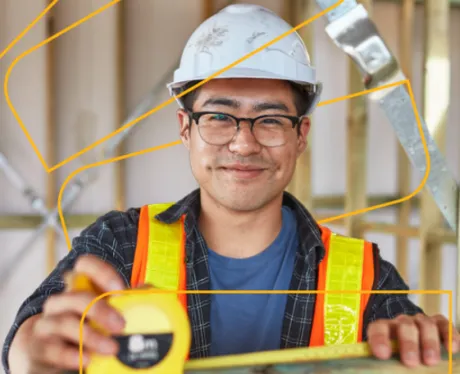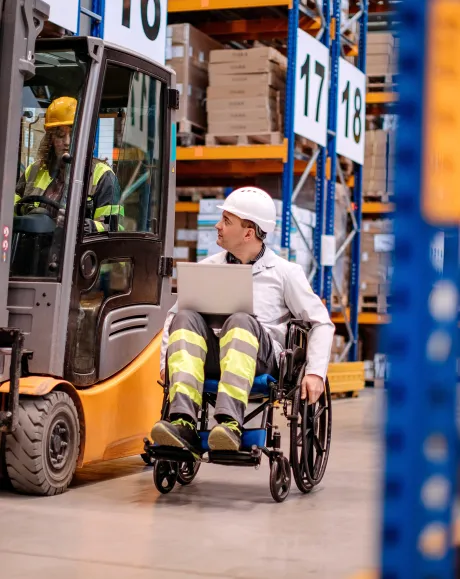Mythbusting the role of apprenticeships
There’s never been a better time to undertake an apprenticeship or traineeship in Australia. Yet when it comes to the value of Vocational Education and Training (VET) career pathways, there are a lot of myths about what is, and isn’t, involved.
As of September 2024, there were 333,765 apprentices in work across Australia. Without them, and the skills they’re developing, Australia would fall well short of the skills required to keep our workforce strong.
Critical skill shortages include key trades to support an increase in the supply of housing, ‘green skills’ to help transition to a lower carbon economy, shortages in all areas of the care sector and skills required to support our defence industry. Many in-demand occupations within these sectors require workers with VET qualifications.
So let’s take a look at some of the common myths.
Myth one: Apprenticeships are a ‘fallback plan’ if you don’t qualify for university
Over 500 career pathways and qualifications are available by completing an apprenticeship or traineeship. These include trades, childcare, health, hospitality, IT, business and more! Describing apprenticeships as a ‘second-rate option’ behind university ignores those who are choosing to fast track into the career they want and ignores those who prioritise hands on learning and practical experience.
Apprentices and trainees are paid to learn. They earn a wage as they work towards gaining the skills to get them qualified – all under the supervision of experts in their field. On completion, they have a nationally-recognised qualification, and 9 out of 10 of them will be employed straight away.
By way of comparison, a university student over the same timeframe accumulates a HECS debt and enters the workforce with limited practical skills.
Just ask estimator Hugo Kregar, who completed his carpentry apprenticeship in 2023. “I have a lot of mates who have gone to university, and they often say to me: ‘Oh, I wish I did an apprenticeship pathway, something that you’ve done’”, Hugo said. “When they see a friend go through the apprenticeship system, they think to themselves: ‘I should have done that as well’”.
Myth two: Apprenticeships are just for tradies
For generations, apprenticeships have been associated in many peoples’ minds with trades. Even more specifically, construction-related trades like plumbing, electrical, roof tiling and carpentry. Like many things to do with apprenticeships and traineeships, though, things have changed dramatically in recent years.
2024 NCVER data shows that 10 of the top 20 apprenticeship and traineeship commencements are non-trade qualification. These include Early Childhood Education & Care, Business, Hospitality, Individual Support, Retail, Hairdressing, Commercial Cookery, Supply Chain Operations and Real Estate Practice.
Further, according to key findings in the 2024 Jobs and Skills report, the sectors most likely to be suffering ongoing shortages in coming years are aged and disability care, while truck drivers, chefs and childcare workers are in shortage too. All these occupations require a VET pathway, meaning ‘hard hats and hammers’ are not the only tools of the trades that our workforce of the future will require.
Myth three: You’ll be on your own
MEGT understands that the challenge of successfully starting an apprenticeship or traineeship, balancing work, off-the-job training and life commitments can be difficult. That’s why apprentices, trainees and employers all have access to a range of tools and resources to help. This is a unique feature of Australia’s apprenticeship system.
Apprentice Connect Providers like MEGT dedicate significant resources to providing layers of support tailored to every apprentice and trainee. Having access to the guidance, support and wisdom of a qualified mentor is proven to help improve apprenticeship and completion rates. Whether it’s boosting confidence, navigating workplace challenges, or setting goals for the future, MEGT’s mentors are helping apprentices thrive and keeping workplaces strong.
MEGT Mentor Tyler Cubby says: “It’s about making sure apprentices know there is someone in their corner and who has their back. Sometimes that can make a huge difference in someone’s life”.
There’s also strong evidence to suggest apprentices and trainees who are professionally mentored are not only more likely to complete their qualifications but are also in a stronger position for long-term success in their careers.
Myth four: VET pathways limit your career and earning potential
Apprenticeships and traineeships are the most valuable pathway to employment.
Recent NCVER data showed that employment outcomes are consistently better for apprentices with 92% being employed after they complete their training. Further, a higher proportion of apprentices were able to secure jobs directly related to their studies.
It is also true that post training incomes are higher for those who complete an apprenticeship with a Jobs and Skills Australia report from 2024 highlighting that the median full-time income for an apprentice or trainee increased by $25,800 the year after completion.
The opportunities for career development and promotion are limitless, according to MEGT ambassador Hugo Kregar. “As soon as I was a qualified carpenter, I began undertaking a construction management degree”, he said. “My background on the tools meant I’m aware of how a building site works, and that gives me a great base to have a better understanding now as an estimator for large-scale projects”.
Myth five: Apprenticeships are only for young people
Some people perceive apprenticeships and traineeships are suited to school leavers or those starting their career. In reality, of the hundreds of thousands of apprentices and trainees that MEGT has signed up since 1998, almost 40% were 25 years of age or older.
That makes sense from a couple of perspectives. Firstly, it’s common these days for workers to hold multiple careers across their working life and re-skilling is a significant part of changing careers. Secondly, many people who complete their first apprenticeship will at some stage start another to upskill to take the next step in their career. Both reinforce that age is no barrier to learning new skills and making yourself more ‘marketable’ to employers in different sectors.















